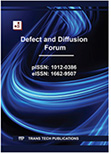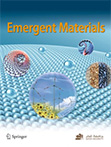Special Session 8
FUNDAMENTAL TO APPLICATIONS OF LOW-DIMENSIONAL MATERIALS (SS8)
The very large interest in low-dimensional (low-D) materials was first initiated by 0D carbon buckyball, then followed by 1D carbon nanotubes and most recently, by the dramatic impact of 2D graphene. Then, this stimulated significantly research & development of revolutionary low-D materials beyond carbon. This new generation of atomically synthesized low-D materials lead to a variety of new findings. It triggered many unprecedented electronic, optical, magnetic, mechanical, chemical, thermal, sensing and bio-inspired properties toward practical applications. The research community exploring low-D materials is now expanding rapidly with new entrants from different engineering disciplines, including materials, physics, chemistry, electrical and electronics. Furthermore, it is emerging toward synthetic biology with bio-compatible low-D materials. Encouraging work has already been reported on isolation, synthesis and an overall fundamental understanding of these novel low-D materials of central importance to advanced technological development. Yet, enormous scientific challenges in these areas need to be addressed through synergistic experimental & theoretical efforts.
ORGANISER(S):
PUBLICATION:
 DEFECT AND DIFFUSION FORUM by Trans Tech. Publications
DEFECT AND DIFFUSION FORUM by Trans Tech. Publications
Cited in SCOPUS and Google Scholar
https://www.scientific.net/DDF/Details EMERGING MATERIALS (Selected papers related to structural materials/applications)
EMERGING MATERIALS (Selected papers related to structural materials/applications)
https://www.springer.com/journal/42247/
INVITED SPEAKER(S):
- Prof. Panos Argyrakis
University of Thessaloniki,
Greece - ‘From MoS₂ to NbSe₂: Understanding Nonlinear
Optical Mechanisms Across 2D-LTMDs’ Prof. Anderson Gomes
Federal University of Pernambuco,
Brazil




